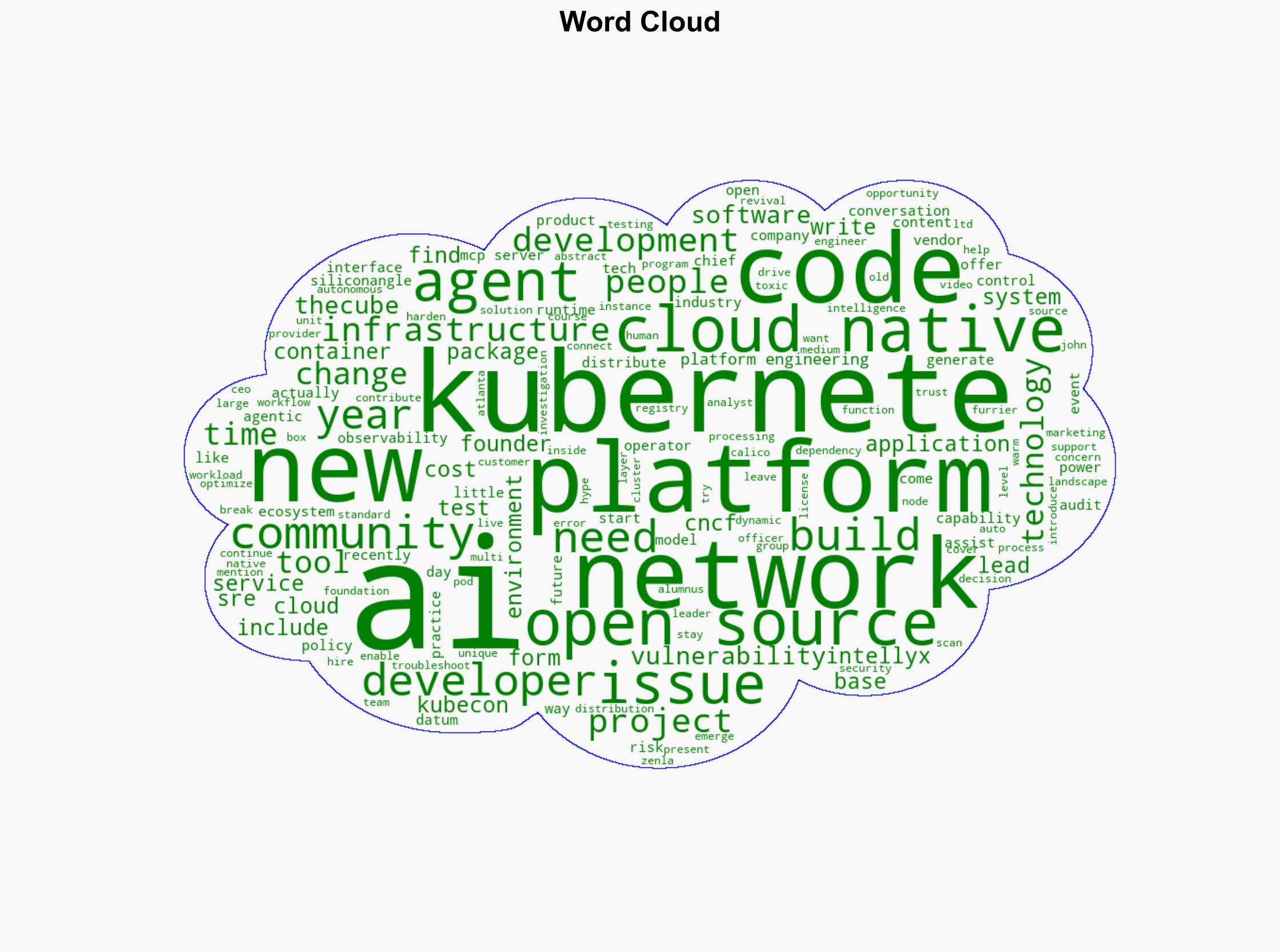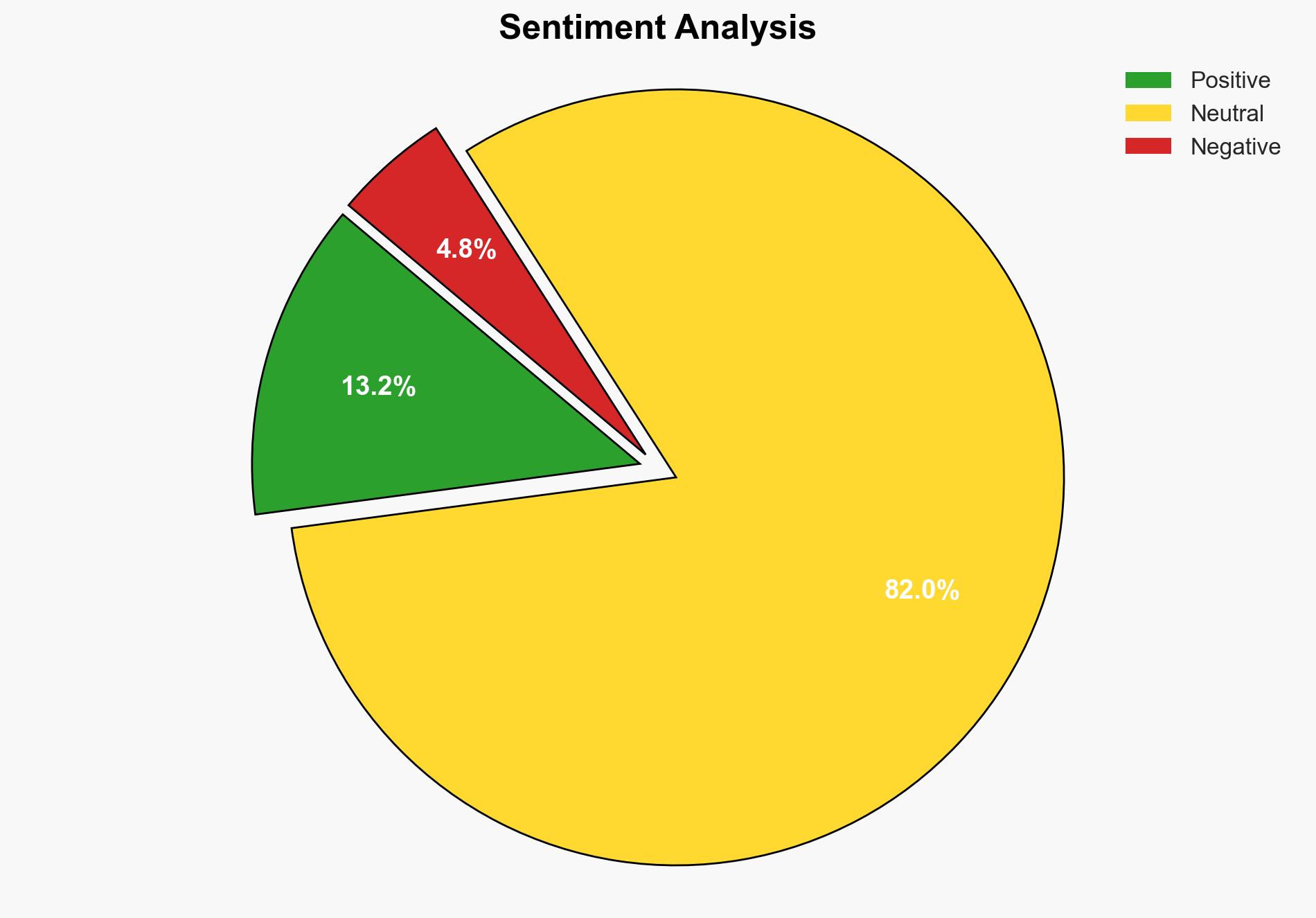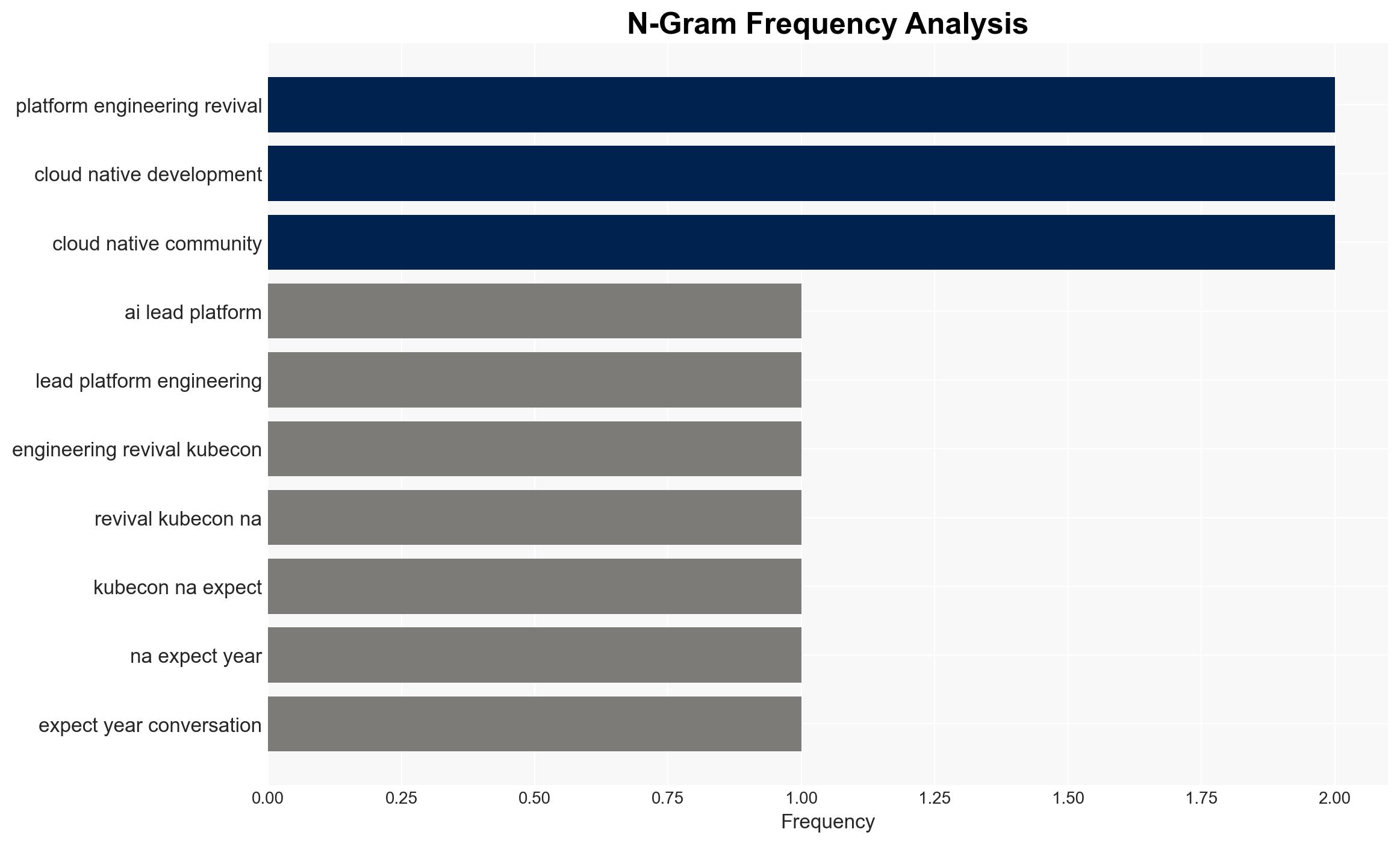AI leads to a platform engineering revival at KubeCon NA 2025 – SiliconANGLE News
Published on: 2025-11-16
AI-powered OSINT brief from verified open sources. Automated NLP signal extraction with human verification. See our Methodology and Why WorldWideWatchers.
Intelligence Report:
1. BLUF (Bottom Line Up Front)
The strategic judgment is that the revival of platform engineering, driven by AI advancements, will significantly reshape the cloud-native development landscape. This is most supported by the hypothesis that AI-enabled tools will enhance developer capabilities, leading to more scalable and resilient infrastructure. Confidence level: Moderate. Recommended action: Encourage investment in AI-driven platform engineering tools and training to capitalize on this trend.
2. Competing Hypotheses
Hypothesis 1: AI advancements will lead to a revival in platform engineering, enhancing developer capabilities and infrastructure resilience. This is supported by the integration of AI with Kubernetes and the development of new tools that facilitate scalable AI-powered applications.
Hypothesis 2: The hype around AI in platform engineering will not translate into substantial practical benefits, and the complexity of integrating AI into existing systems will outweigh the potential advantages. This is supported by historical precedents where technological hype did not meet practical expectations.
Hypothesis 1 is more likely due to the ongoing investment in AI technologies and the strategic initiatives by organizations like the Cloud Native Computing Foundation to standardize AI workloads.
3. Key Assumptions and Red Flags
Assumptions: AI tools will be effectively integrated into existing cloud-native environments; developers will adopt new AI-driven practices; AI will provide tangible benefits over existing methods.
Red Flags: Over-reliance on AI without adequate understanding; potential for AI tools to introduce new vulnerabilities; lack of skilled personnel to manage AI-driven platforms.
4. Implications and Strategic Risks
The integration of AI into platform engineering could lead to significant shifts in the cloud-native ecosystem, potentially disrupting current market leaders. There is a risk of increased cyber threats as AI tools become targets for exploitation. Economically, organizations that fail to adapt may lose competitive advantage. Informationally, the rapid pace of AI development could lead to misinformation about capabilities and risks.
5. Recommendations and Outlook
- Invest in training programs to upskill developers in AI-driven platform engineering.
- Develop robust security protocols to protect AI tools and data.
- Encourage collaboration between AI researchers and platform engineers to ensure practical tool development.
- Best-case scenario: AI-driven platform engineering leads to significant improvements in infrastructure scalability and resilience.
- Worst-case scenario: AI integration fails to deliver expected benefits, leading to wasted investments and increased security risks.
- Most-likely scenario: Gradual adoption of AI tools with incremental improvements in platform engineering practices.
6. Key Individuals and Entities
Chris Aniszczyk, Cloud Native Computing Foundation; Daniel Bryant, Syntasso Ltd; Pavlo Baron, Platform Engineering Lab.
7. Thematic Tags
Cybersecurity, Cloud-Native Development, AI Integration, Platform Engineering
Structured Analytic Techniques Applied
- Adversarial Threat Simulation: Model and simulate actions of cyber adversaries to anticipate vulnerabilities and improve resilience.
- Indicators Development: Detect and monitor behavioral or technical anomalies across systems for early threat detection.
- Bayesian Scenario Modeling: Quantify uncertainty and predict cyberattack pathways using probabilistic inference.
- Network Influence Mapping: Map influence relationships to assess actor impact.
Explore more:
Cybersecurity Briefs ·
Daily Summary ·
Support us
·





